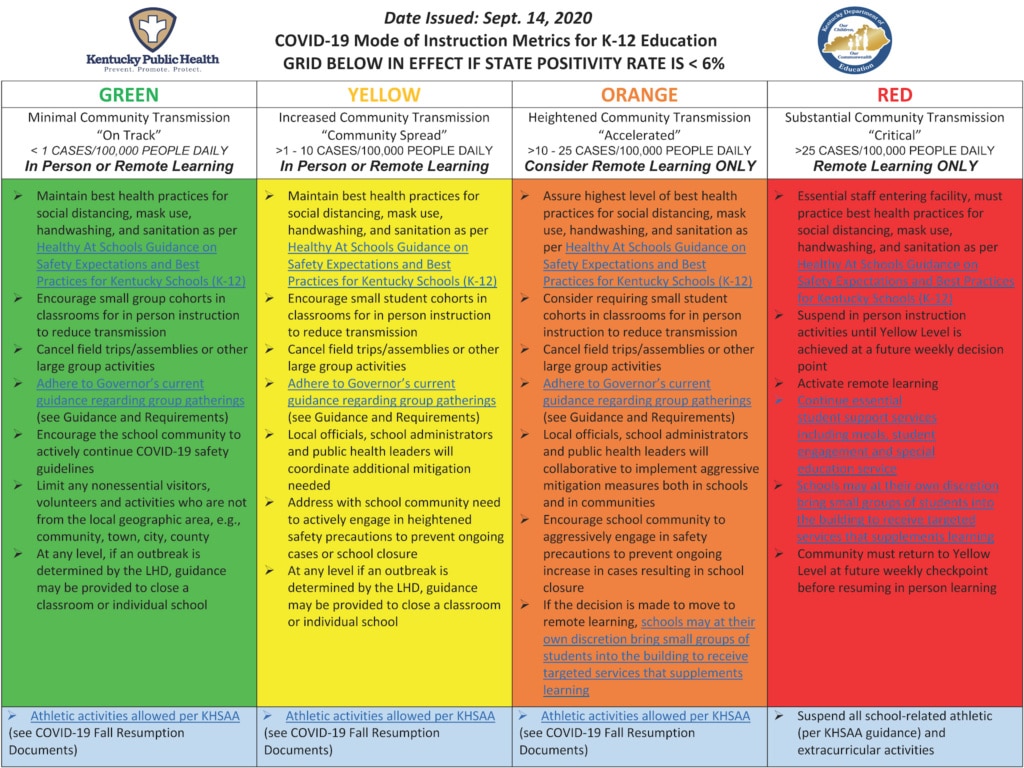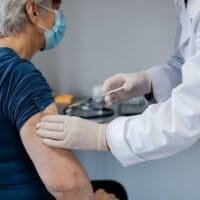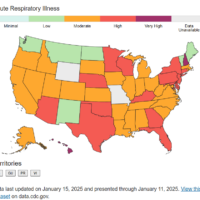At their meeting Thursday night, no one on the Christian County Board of Education heard that the county’s coronavirus incidence rate is already so high that Kentucky education and health officials would want the district to abandon in-person instruction.
Instead, they received information that is diminished by a time lag and does not take into account the most up-to-date figures available from the Christian County Health Department. At times, the metric was misinterpreted completely.
Anyone who wanted to could calculate the incidence rate using more timely data.
Hoptown Chronicle did so by plugging in the new COVID-19 case numbers the health department issued a couple of hours before the school board meeting began. Based on the local numbers, Christian County’s incidence rate Thursday afternoon was 28.
The school board heard a different incidence rate — 19.3 — when Superintendent Chris Bentzel and District Assessment Coordinator Zach Hibbs reported on how the district is faring since returning to in-person instruction on Sept. 8. The lower rate announced at the school board meeting came from a state report. But that report relies on COVID-19 numbers tallied in Frankfort, and those generally lag behind the virus case numbers reported by local health departments in Kentucky’s 120 counties.
(Editor’s Note: As of Friday, Christian County’s incidence rate had grown to 30.8.)
The incidence rate is calculated by taking the average number of new coronavirus cases over the previous seven days and then adjusting for a population of 100,000 people. In Christian County, the seven-day average of new cases on Thursday was 19.7. To adjust for population, we used the county’s 2019 U.S. Census Bureau population estimate of 70,461 — the same population used by the state.

Under new guidance issued Monday by the state Department of Education and the Department of Public Health, school districts are expected to consider the coronavirus incidence rate for their entire county and not just the cases within the school district.
The guidance uses a four-tier chart that is color-coded to show districts how they should respond at different levels as the virus spread increases in their communities. It aims to allow for local control as long as the state’s positivity rate is less than 6% and the health care system has enough resources. Gov Andy Beshear said there will not be any recommendations coming from his office prior to Sept. 28.
When the incidence rate exceeds 25 cases per 100,000 people, that puts the community at the most dangerous level, which is red. The levels in order, and their incidence rates, are green (1), yellow (1-10), orange (10-25) and red (more than 25).
At the red level, the state recommends suspending in-person instruction until the community’s incidence levels go down to yellow. The Kentucky High School Athletic Association also recommends suspending all school-related athletic and extracurricular activities once a community reaches the “critical” level of community spread.
School board member Tom Bell, who was the only member opposed to the board’s decision to bring students back to schools before Sept. 28, asked Bentzel at Thursday’s meeting what number would cause the district to go to virtual instruction. Bentzel said it would be an incidence rate of 25, but he also said he would prefer to handle any changes on a school-by-school decision rather than doing it districtwide.
“If we could calculate that incident rate in a school, that school would probably go virtual if it goes in that critical red area. … If you look at Millbrooke or Freedom or South Christian, I don’t think it’s necessary to do the whole district,” Bentzel said.
He spoke about the impact of the virus from the community to the schools, noting, “Coming out of Labor Day — and the assisted living home in Christian County that had the 30 positive cases — it’s kind of taken a hit on us, so we hope to move past that eventually.”
However, the incidence rate is a reflection of the new coronavirus cases within the entire community — not subsections of that community.
“Incidence is important because it provides a more complete picture of the state of COVID in a given community,” notes Covid Act Now, a multidisciplinary group of technologists, epidemiologists, health experts and public policy leaders that have provided data analysis of COVID-19 in the United States since March. The group’s website provides a detailed explanation of incidence rates.
Health Commissioner Steven Stack spoke Monday at a press conference about the new reporting requirements and why certain metrics are used.
“Essentially, incidence means how common is disease in the community,” Stack said. “This is [the] number of new cases per day per 100,000 persons living in that area. It’s done by the county level.
“These are standardized cut-points that are used in federal reporting, state reporting. It’s not cut-points we defined. It’s cut-points that are already state of the practice for epidemiology.”
RELATED:
- Hopkinsville girls soccer, cheerleading suspended after students test positive for COVID-19; HHS-CCHS football game postponed
- Christian County’s 7-day COVID-19 average reaches record high; health officials report virus-related death
- Christian County health officials warn September could have largest COVID-19 case count
- Beshear administration lays out detailed guidance for schools to consider throughout the pandemic, says it’s up to them to follow it
(Jennifer P. Brown is the editor of Hoptown Chronicle. Reach her at editor@hoptownchronicle.org. Julia Hunter is the engagement editor for Hoptown Chronicle. Reach her at julia@hoptownchronicle.org.)







